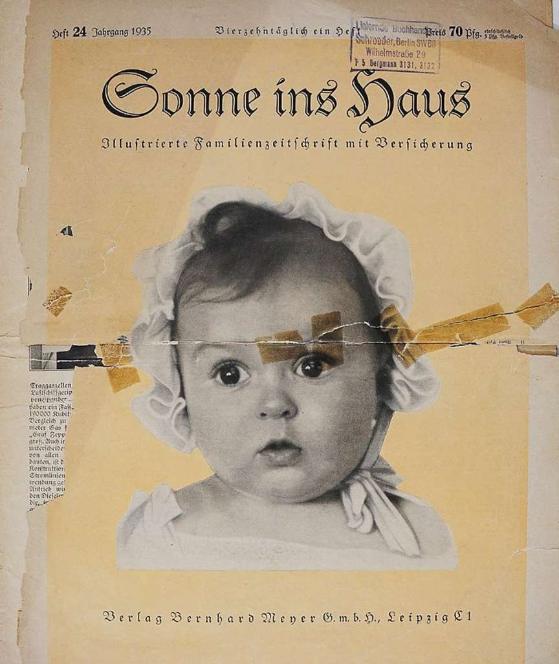The Sun in the Home

Pictured above is a Nazi-backed German magazine published in 1935. The magazine is titled “Sonne ins Haus” — “The Sun in the Home.” The baby pictured was born in Berlin on May 17, 1934. Her father was an opera singer who went by the stage name Yasha Lenssen. The photo was taken by one of the top photographers in Berlin if not all of Germany. The baby’s photo is on the cover of the magazine because that photographer had just won a contest in furtherance of a Nazi propaganda campaign. This photo of Yasha Lenssen’s daughter was selected as representing the “perfect Aryan child.”
But there were a handful of problems with the campaign’s result.
First, the parents of the baby didn’t know about the contest — the photographer submitted the photo without their permission or knowledge.
Second, the baby wasn’t German, at least not ethnically. Her parents were both born in Latvia; they met there and, as teens in 1928, were married there. The couple spoke Russian in their home (even though the father went to German schools). They only moved to Germany to study at a conservatory in Berlin — and even that was only a seasonal thing. Until 1939, they’d return to Latvia every summer.
But third, and most importantly, the baby was by no means Aryan. Yasha Lenssen was really Jacob Levinsons. The baby’s mother’s maiden name was Pauline Levine. The baby, Hessy Levinsons, was the granddaughter of a cantor. The “perfect Aryan child” was Jewish.
A moment of anti-Semitism sparked the odd result. Jacob Levinsons — employing his non-Jewish stage name — managed to get a gig at a local opera company in the early 1930s. But when his employers learned his true name and, therefore, his religion, they canceled his contract. Mr. Levinsons ended up taking a job as “a representative in Berlin for a business firm abroad,” according to an interview his daughter gave to the United States Holocaust Memorial Museum. This job gave the young family a small amount of disposable income, leading to the photograph. When Hessy was about six months old, her family took her to one of the area’s top photographers and had the portrait in question taken. Thinking nothing of it — other than the fact that they really liked the picture — Mr. and Mrs. Levinsons framed their copy of the photo and put it on the piano.
A few months later, a lady who helped clean the Levinsons’ apartment told Mrs. Levinsons that she had seen that same photo of Hessy on the newsstands. The photo proved popular, with many families hanging it in their own homes, not knowing the true identity or religion of the child depicted. But how Hessy’s picture became so well known remained a mystery to the Levinsonses. So Mrs. Levinsons approached the photographer who took the picture. He explained that the Nazis were running a beauty contest and he was one of the ten or so photographers who were invited to enter. (It wasn’t an invitation one could turn down, either.) He and the other photographers were to submit ten pictures each, and he decided to submit the one of Hessy Levinsons knowing full well that the baby was Jewish. The photographer, according to another interview with Hessy (but this time in a German paper), wanted to make the Nazis look ridiculous.
It worked — it just took some time. At first, the Levinsonses didn’t want others to find out the truth, as it would have certainly led the Nazis to inflict unspeakable evils upon their family. Survival was the first order of business — which they did. The family moved to France in 1938 and later, to Cuba. Hessy eventually moved to New York and got married — and, of course, told the story about how she was the little Jewish baby who became the perfect Aryan child.
Bonus Fact: In 2009, Amtrak police arrested a man named Duane Kerzic for taking pictures of trains as they pulled into NYC’s Penn Station — suspecting him of foul play and accusing him of trespassing, in any event. But things were not nearly that nefarious. As the New York Times reported, Kerzic was a semi-pro photographer who was there to take photos for his entry into Amtrak’s “Picture Our Train” contest. (He didn’t win and can no longer comment about the contest.)
From the Archives: Invisible Mothers: Photographs of children with their moms — except the moms can’t be seen (kind of).
Related: A book of baby faces, titled “Baby Faces.” (It’s actually a really great board book for the children under two years old in your life.)
